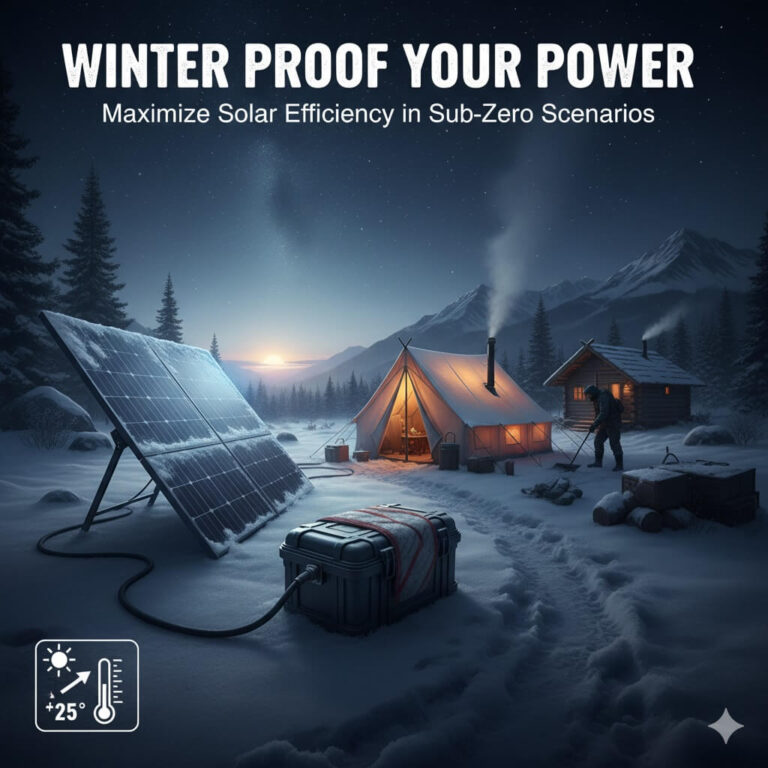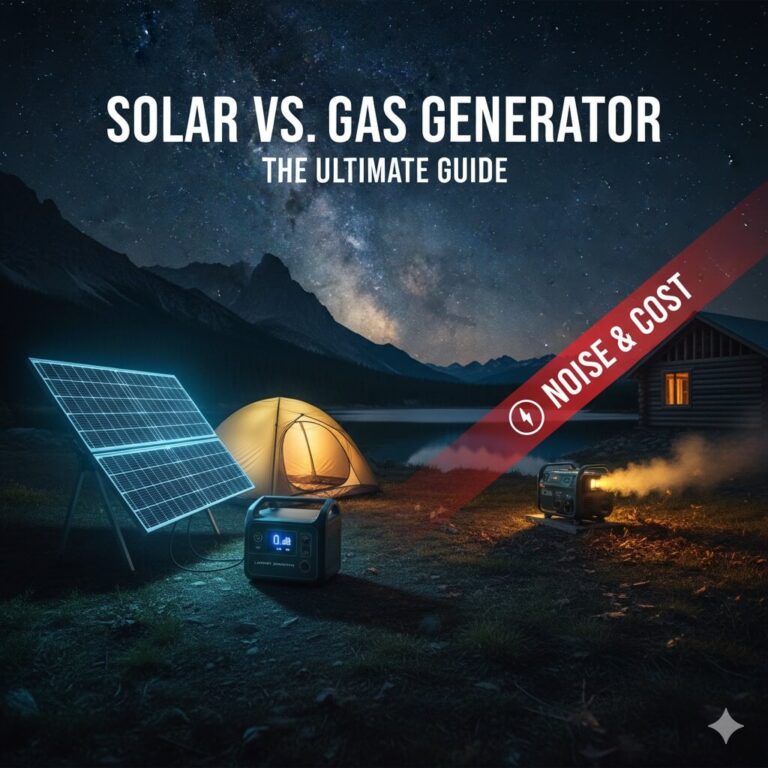2025 Green Energy Tax Credits: Your Ultimate Guide for Homeowners to Save

2025 Green Energy Tax Credits: Your Ultimate Guide for Homeowners to Save Thousands
Imagine upgrading your home to be more energy-efficient, environmentally friendly, and significantly cheaper to run—all while getting a substantial tax break. For U.S. homeowners, 2025 offers an unparalleled opportunity to do just that. With rising energy costs and a growing desire for sustainable living, investing in green energy solutions for your home has never been more appealing, especially with generous federal green energy tax credits available.
Many homeowners, however, find information on these incentives complex and confusing, often unaware of the full scope of potential savings. This guide cuts through the jargon, revealing how you can claim thousands of dollars in tax credits. Crucially, 2025 might be a pivotal year: while current legislation extends many benefits, proposed bills could accelerate the repeal or modification of some credits after December 31, 2025. This creates an urgent window of opportunity for homeowners to act.
This ultimate guide provides a comprehensive, step-by-step breakdown of the top federal 2025 homeowner energy tax credits. We’ll explain who qualifies, what improvements are eligible, and how to maximize your savings before potential policy shifts. Get ready to invest in your home’s future and your wallet!
- 2025 Green Energy Tax Credits: Your Ultimate Guide for Homeowners to Save Thousands
- Understanding 2025 Federal Green Energy Tax Credits for Your Home
- Maximize Your Savings with the 2025 Residential Clean Energy Credit (RCEC)
- Smart Upgrades, Smart Savings: The 2025 Energy Efficient Home Improvement Credit (EEHIC)
- Powering Your Ride: The 2025 EV Charging Home Tax Credit
- Beyond Federal: Stacking Your Savings with State, Local & Utility Incentives
- Your Action Plan: How to Claim Your 2025 Green Energy Tax Credits
- Conclusion: Invest in Your Home, Invest in Your Future
- Frequently Asked Questions (FAQs) About 2025 Green Energy Tax Credits
Understanding 2025 Federal Green Energy Tax Credits for Your Home
The Inflation Reduction Act (IRA) of 2022 significantly expanded and extended federal energy tax credits for homeowners, initially supporting these incentives through 2032. This legislation brought unprecedented backing for residential clean energy and energy-efficient home improvements, making sustainable living more accessible than ever.
However, a crucial alert for 2025: While the IRA set longer timelines, proposed U.S. House of Representatives legislation (sometimes called “The One, Big, Beautiful Bill”) could accelerate the repeal or modification of some credits after December 31, 2025. Always consult current IRS guidance or a tax professional for the most up-to-date information, as laws can change. For this guide, we’ll explain the currently effective IRA provisions for 2025, emphasizing the potential urgency to act this tax year.
For homeowners, savings primarily come through three key credit categories:
- The Residential Clean Energy Credit (RCEC): This covers major clean energy installations like solar panels, geothermal systems, and battery storage.
- The Energy Efficient Home Improvement Credit (EEHIC): This includes a broader range of smaller, energy-saving upgrades such as insulation, windows, and heat pumps.
- Clean Vehicle Tax Credits: While our main focus is home improvements, the Qualified Alternative Fuel Vehicle Refueling Property Credit for home EV chargers is a direct home energy incentive.
Remember, these are tax credits, not deductions. This means they directly reduce the amount of tax you owe, dollar for dollar, making them incredibly valuable for lowering your overall tax liability.
Maximize Your Savings with the 2025 Residential Clean Energy Credit (RCEC)
Often called the solar tax credit 2025, the Residential Clean Energy Credit (RCEC) is a powerhouse among homeowner energy incentives. This nonrefundable tax credit can reduce your tax liability to zero, and you can carry forward any unused portion to future tax years.
For eligible systems installed and placed in service in 2025, this credit offers a generous 30% of the cost of the qualified clean energy property. Crucially, most eligible technologies, like solar and geothermal, have no annual or lifetime dollar limit on the credit amount. So, if you install a $30,000 solar energy system, you could qualify for a $9,000 tax credit.
Here’s what qualifies for the RCEC in 2025:
- Solar Electric Property (Solar Panels/PV): Systems converting sunlight to electricity. This includes roofing tiles or shingles if they also generate electricity.
- Solar Water Heating Property: Systems that get over 50% of their energy from the sun to heat water for home use. They must be certified by the Solar Rating Certification Corporation (SRCC) or a comparable state-endorsed entity.
- Geothermal Heat Pump Property: Systems using the earth’s stable temperature for home heating and cooling. These must meet specific Energy Star program standards.
- Small Wind Energy Property: Wind turbines installed on your property to generate electricity for home use.
- Battery Storage Technology: Installed after December 31, 2022, with a capacity of at least 3 kilowatt-hours (kWh). This lets homeowners store excess solar power or grid electricity for later use.
- Fuel cell property also qualifies, subject to specific kilowatt capacity limits.
What’s included in the costs? Eligible expenses generally include labor costs for onsite preparation, assembly, or original installation, plus piping or wiring connecting the system to your home. Sales tax on eligible expenses can also be included.
Eligibility Essentials:
- The system must be new and not previously owned.
- You must install it at a U.S. residence you own, whether it’s your primary or a second home.
- Even participation in community solar projects can qualify if you own an interest in an off-site project and the electricity offsets your home’s consumption.
- Note that leased solar systems or Power Purchase Agreements (PPAs) typically don’t qualify for this credit, as you don’t own the system.
Claiming Your RCEC: File IRS Form 5695, Residential Energy Credits (Part I), with your federal tax return (Form 1040). Claim the credit in the year the property is installed and placed in service, not just purchased. Keep all your receipts and documentation meticulously.

Smart Upgrades, Smart Savings: The 2025 Energy Efficient Home Improvement Credit (EEHIC)
Beyond major clean energy installations, the Energy Efficient Home Improvement Credit (EEHIC) helps homeowners save on a wider range of smaller, impactful upgrades that boost energy efficiency. This is also a nonrefundable tax credit, offering 30% of the cost of qualifying improvements.
The EEHIC has specific annual limits, which is a key difference from the RCEC:
- General Annual Limit: Up to $1,200 per year for most qualifying home improvements and energy property costs.
- Specific Higher Limits (These can stack on top of the general $1,200 limit):
- Exterior Doors: Up to $250 per door, with a total limit of $500 per year. Doors must meet Energy Star requirements.
- Exterior Windows & Skylights: Up to $600 per year. These must meet Energy Star Most Efficient certification.
- Home Energy Audits: Up to $150 for a qualified audit.
- High-Efficiency Heat Pumps & Biomass Stoves/Boilers: A substantial limit of $2,000 per year. These must meet the highest efficiency tiers set by the Consortium for Energy Efficiency (CEE). This means you could potentially claim the general $1,200 plus an additional $2,000 for a heat pump, totaling $3,200 in a single year!
Eligible Improvements for 2025 (includes both materials and installation costs for most items):
- Qualified Energy Efficiency Improvements: Insulation, air sealing materials/systems (meeting IECC standards for 2025), exterior doors, and exterior windows/skylights.
- Residential Energy Property: Central AC units, natural gas, propane, or oil furnaces and hot water boilers (up to $600), electric or natural gas heat pumps, electric or natural gas heat pump water heaters (up to $2,000), and biomass stoves and boilers (up to $2,000). Also includes upgrades to panelboards, sub-panelboards, or other electric load centers, and related supply wiring (up to $600).
Eligibility Essentials: Improvements must be made to an existing home in the U.S. that serves as your principal residence. Components must be new and expected to last at least 5 years.
New for 2025: The Product Identification Number (PIN) Requirement: For most qualifying EEHIC items (excluding insulation and air sealing materials), installations in 2025 will require you to report a Product Identification Number (PIN) from a qualified manufacturer on your tax return. This is a new compliance layer. Homeowners should verify products meet this and ensure they receive the necessary PIN or Qualified Manufacturer (QM) code for their records. The IRS and ENERGY STAR are still defining how manufacturers register and provide these codes.
Claiming Your EEHIC: Use IRS Form 5695, Residential Energy Credits (Part II). This credit generally cannot be carried forward to future tax years.
Powering Your Ride: The 2025 EV Charging Home Tax Credit
As electric vehicles (EVs) become more common, convenient home charging is essential. The Qualified Alternative Fuel Vehicle Refueling Property Credit (Section 30C) offers a tax incentive for installing the necessary infrastructure.
- Credit Amount: You can claim 30% of the cost, up to a maximum of $1,000, for qualified home EV charging equipment.
- Duration: This credit is extended through 2032 under current law.
- Eligibility: The charging equipment must be installed at a property that serves as your main home (primary residence) in the U.S.
- Qualifying Expenses: This includes the cost of the charging unit itself, necessary wiring, and installation labor.
It’s worth briefly noting the broader context of electric vehicle incentives for homeowners: The federal government also offers tax credits for purchasing new (up to $7,500) and used (up to $4,000) clean vehicles. However, these come with strict income limits, MSRP caps, and complex battery component sourcing and final assembly location requirements for 2025.
Crucial 2025 Alert: Similar to the home energy credits, proposed House legislation also seeks to eliminate both new and used EV purchase tax credits, and potentially the EV charger credit, after December 31, 2025. This means 2025 could represent the final opportunity to benefit from these incentives.
Claiming Your EV Charger Credit: You will claim this credit by filing IRS Form 8911, Alternative Fuel Vehicle Refueling Property Credit, with your federal tax return.
Beyond Federal: Stacking Your Savings with State, Local & Utility Incentives
While federal green energy tax credits offer substantial savings, savvy homeowners know the true magic happens when you stack green energy incentives. Federal credits can often combine with programs from state governments, local municipalities, and even utility companies, maximizing your overall financial benefits.
How it Works: Generally, federal credits are calculated after any state or utility rebates have been applied. For example, if you install a $20,000 solar system and receive a $1,000 rebate from your local utility, your federal 30% credit would then be calculated on the remaining $19,000, resulting in a $5,700 federal credit (plus your $1,000 rebate!).
Where to Look for Additional Savings:
- State Energy Offices: Many states offer their own tax credits, grants, or rebate programs for specific energy-efficient upgrades or renewable energy installations. Check your state’s Department of Energy or similar environmental/energy agency website.
- Local Municipalities/Counties: Some cities or counties have specific programs, which might include property tax exemptions for solar, low-interest loans for energy efficiency, or direct rebates.
- Utility Companies: Most utility providers offer rebates for energy-efficient appliance upgrades (like new refrigerators and washing machines), smart thermostats, or specific incentives for solar installations.
Important Considerations: While stacking is generally beneficial, some state or local incentives might be considered taxable income. Always consult with a qualified tax professional to understand the full implications for your specific situation.
Your Action Plan: How to Claim Your 2025 Green Energy Tax Credits
Navigating tax forms might seem daunting, but with clear understanding and good record-keeping, claiming your 2025 green energy tax credits is straightforward.
- Timing is Key: You claim these credits for the tax year the equipment or improvement is placed in service—meaning it’s installed and fully operational—not just when you purchase it. For 2025, ensure your projects are completed and functioning by December 31, 2025.
- Essential IRS Forms:
- IRS Form 5695, Residential Energy Credits: This is the primary form for the RCEC (Part I) and EEHIC (Part II).
- IRS Form 8911, Alternative Fuel Vehicle Refueling Property Credit: Use this form if you’re claiming the credit for a home EV charging station.
- Meticulous Record-Keeping is Paramount: The IRS will require proof. Keep all original documentation in a safe place.
- Invoices & Receipts: For all eligible expenses, detailing both materials and labor.
- Manufacturer Certifications: Confirming Energy Star or CEE standards are met.
- Product Identification Numbers (PINs) / Qualified Manufacturer Codes: Crucial for many EEHIC items starting in 2025. Ensure you obtain these from your installer or manufacturer.
- Date of Installation: Documenting when the property was “placed in service.”
- Seeking Professional Guidance: For complex situations, when stacking multiple incentives, or to ensure you’re maximizing your savings given potential legislative changes, we strongly recommend consulting a qualified tax professional (e.g., a Certified Public Accountant—CPA, or an enrolled agent). They can provide personalized advice and ensure proper filing.
Conclusion: Invest in Your Home, Invest in Your Future
2025 offers a powerful and potentially urgent window for homeowners to significantly reduce their tax liability while making impactful, sustainable improvements to their homes. By strategically leveraging the 2025 green energy tax credits—from the substantial Residential Clean Energy Credit for solar and geothermal to the valuable Energy Efficient Home Improvement Credit for upgrades like heat pumps and insulation, and even the EV charger credit—you can unlock thousands in savings.
Remember, the possibility of legislative changes after this year underscores the importance of understanding and acting on these credits in 2025. Don’t let this opportunity for substantial savings slip away. Embrace the twin advantages: immediate financial relief through tax credits and long-term benefits from reduced energy bills, increased home value, and a smaller environmental footprint.
The path to a greener, more financially resilient home is clearer than ever. Start researching eligible improvements, gather necessary documentation, and consult with a tax professional today. Don’t let thousands of dollars in potential savings slip away—make 2025 your year to go green and save big!
Frequently Asked Questions (FAQs) About 2025 Green Energy Tax Credits
- Q: What are the main federal green energy tax credits for homeowners in 2025?
- A: The primary credits are the Residential Clean Energy Credit (for solar, geothermal, and battery storage), the Energy Efficient Home Improvement Credit (for insulation, windows, and heat pumps), and the Qualified Alternative Fuel Vehicle Refueling Property Credit (for home EV chargers).
- Q: How much can I save with the solar tax credit (Residential Clean Energy Credit) in 2025?
- A: You can claim 30% of the cost of eligible solar, geothermal, or battery storage systems. There’s no annual or lifetime dollar limit for most of these technologies, and you can carry forward any unused credit.
- Q: Are heat pumps eligible for a tax credit in 2025?
- A: Yes, electric or natural gas heat pumps and heat pump water heaters qualify for the Energy Efficient Home Improvement Credit. This offers a credit of 30% of the cost, up to $2,000 annually, in addition to other eligible improvements.
- Q: Do I need to keep receipts for my green energy home improvements?
- A: Absolutely. Meticulous record-keeping, including invoices, receipts, manufacturer certifications, and Product Identification Numbers (PINs) for 2025, is crucial for claiming these tax credits.
- Q: Can I combine federal green energy tax credits with state or local rebates?
- A: Yes, you can often “stack” federal tax credits with state, local, and utility company rebates. Generally, the federal credit is calculated on the cost of the improvement after any rebates are applied.



